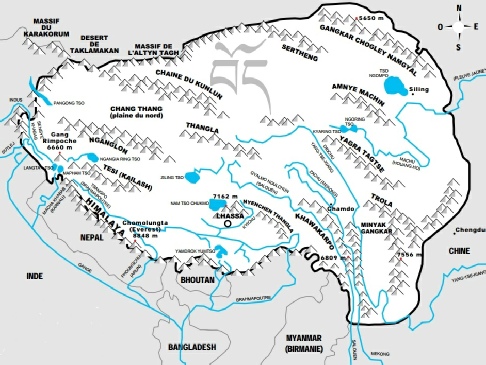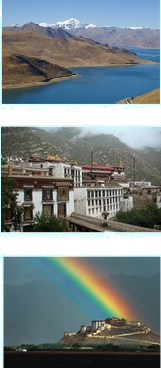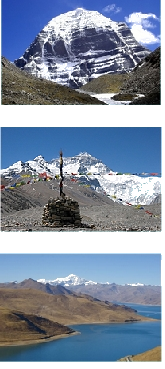

 Located on the south-western border of China, southwest of Qinhgai, the Tibet Plateau is bordered by Xinjang to the north, Sichuan to the east, Quinhai to the north east, Yunnan to the south east and Myanmar, India, Bhutan and Nepal to the south and east.
Located on the south-western border of China, southwest of Qinhgai, the Tibet Plateau is bordered by Xinjang to the north, Sichuan to the east, Quinhai to the north east, Yunnan to the south east and Myanmar, India, Bhutan and Nepal to the south and east.
This represents a territory of more than 1.2 million square kilometers with a population of 2.7 million Tibetans who are the predominant ethnic group in Tibet which remains a mysterious kingdom specially known to be the highest plateau in the world.
Until today Tibet remains the most exciting, mysterious, enchanting destination to a country of the underdeveloped world. The transformation of his pious, gentle people, influenced by Buddhism towards a warrior and aggressive people is an exciting epic.
Its isolation until the end of the 20th century attracted explorers of all types: historians, adventurers and pilgrims. Almost all Tibetans follow Tibetan Buddhism, known as Lamaism and which is very closely influenced by Indian Buddhism at its beginning.
But then, Tibetan Buddhism developed its own specificities and practices. For example, they believe there is a living Buddha who is a reincarnation of the first, a foreign belief in Chinese Buddhism.
Total area: 1.2 million km² - Capital: Lhasa - Main Language: Tibetan, Chinese - Main Religion: Tibetan Buddhism
Main exports: crafts, food


TIBET

